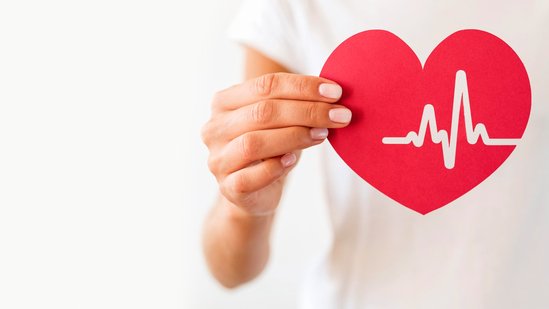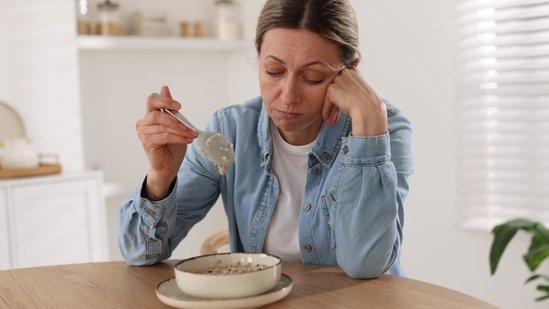
- Past studies show there are a number of ways in which people can help retain brain health as they age, including being physically active.
- A new study says as little as 5 minutes of moderate-to-vigorous physical activity can potentially help keep the brain healthy as we age.
- Researchers found older adults who stay active through moderate-to-vigorous physical activity during the day have significantly better processing speed, working memory, and executive function than those who spent less time.
“Age and disease-related declines in cognitive function have far-reaching personal and public health impacts,” Audrey M. Collins, PhD, a postdoctoral researcher in the Department of Neuroscience at the AdventHealth Research Institute in Florida, told Medical News Today.
“Thus, there is a clear need for further research to better understand cognitive aging and how we can promote brain health across the lifespan. Physical activity is a lifestyle behavior that may play a role in not only the prevention and attenuation of cognitive decline, but the promotion of cognitive function in late life,“ Collins explained. “Research has shown that even in late adulthood, our brains do not lose the capacity for plasticity, if leveraged in the right way.”
She is the co-lead author of a new study recently published in the journal Age and Ageing, which showed that as little as 5 minutes of moderate-to-vigorous physical activity can potentially help keep the brain healthy as we age.
For this study, researchers analyzed health data from 585 older adults between the ages of 65 to 80 who participated in the U.S.-based IGNITE study.
This study examined the relationship between a person’s activities over a 24-hour period — sleeping, sedentary time, light physical activity, and moderate-to-vigorous physical activity — to their cognitive performance.
“In the context of cognitive function, we have often studied sleep, sedentary behavior, and physical activity as if they are independent of one another,” Collins said. “Rather, these lifestyle behaviors are linked through the context of time, where we are fixed to 24-hours per day.”
“Prior science was limited due to statistical challenges, which we were able to overcome in our paper using novel techniques,” she continued. “Therefore, we examined 24-hour time-use composition in order to understand whether the way time is used across the day may be differentially related to cognitive function in late adulthood.”
At the study’s conclusion, Collins and her team found that participants who spent more time during the day performing moderate-to-vigorous physical activity had significantly better:
“The significance of this finding is that we can confirm that the way in which time is used across the 24-hour day may be differentially related to cognitive function in late adulthood, and that this relationship may be domain-specific,” Collins explained.
“This means that time spent in moderate-to-vigorous physical activity may not influence all domains of cognitive function uniformly. However, the reason for this remains a matter of speculation and will need further research,” she cautioned.
Additionally, the researchers discovered that the biggest cognitive gains were seen in participants who went from doing no moderate-to-vigorous physical activity to a minimum of 5 minutes a day.
“Our results suggest that hypothetically reallocating time to moderate-to-vigorous physical activity may be beneficial for cognitive function, regardless of what lifestyle behavior this time was reallocated from,” Collins said. “Further, even small increases of moderate-to-vigorous physical activity may be favorable.”
“Our study highlights the importance of increasing and/or maintaining time spent in moderate-to-vigorous physical activity for cognitive function in late adulthood, specifically for domains of processing speed, working memory, and executive function,” she continued.
“As these results are cross-sectional, we plan to test these relationships longitudinally and experimentally, which may in turn inform 24-hour guidelines for public health and dementia prevention. Additionally, we aim to evaluate how 24-hour time use may be related to other brain health outcomes in late adulthood,” she told us.
MNT had the opportunity to speak with Raphael Wald, PsyD, a neuropsychologist at Marcus Neuroscience Institute, part of Baptist Health South Florida, about this study.
“The results are not shocking but helpful in pointing to the importance of moderate-to-vigorous physical activity — assuming a person is healthy enough to do so — rather than lighter exercise as an important factor in cognitive functioning,” Wald, who was not involved in this research, commented. “Exercise, in general, is crucial for our brain and heart health as we age.”
“As people are living longer than they did in past decades, we are seeing more dementia [cases] than in the past,” he continued. “Increasing age is the biggest risk factor for dementia, which in turn means that dementia is becoming a bigger health crisis than it was in the past.”
While he welcomed the results of the recent study, Wald pointed to the need of finding accessible prevention options for people with limited mobility, too:
“In my experience, many older adults have physical limitations like arthritis that prevent them from being able to exercise vigorously. I think it would be helpful to examine the motivation for exercise in individuals with these limitations. Pain is a huge barrier to exercise for many.”
MNT also spoke to Gary Small, MD, chair of psychiatry for Hackensack University Medical Center in New Jersey and author of more than a dozen books on brain health and aging, about this research.
“These results are consistent with previous research supporting the clear cognitive benefits of physical exercise for older adults,” Small, who was not involved in the study, commented. “The finding that even short bursts of moderate-to-vigorous exercise can bolster brain health is encouraging that people need not become triathletes to protect their mental abilities as they age.”
“The key is to exert oneself enough to push the heart and lungs to pump oxygen and nutrients to the brain,” he continued. “We know that such aerobic exertion increases
“This study also informs us that even just 5 minutes of vigorous exercise offers cognitive benefits, but longer exercise sessions are even better. The bottom line is, if time permits, take that extra jog or walk around the block. Your brain will thank you.”
— Gary Small, MD







